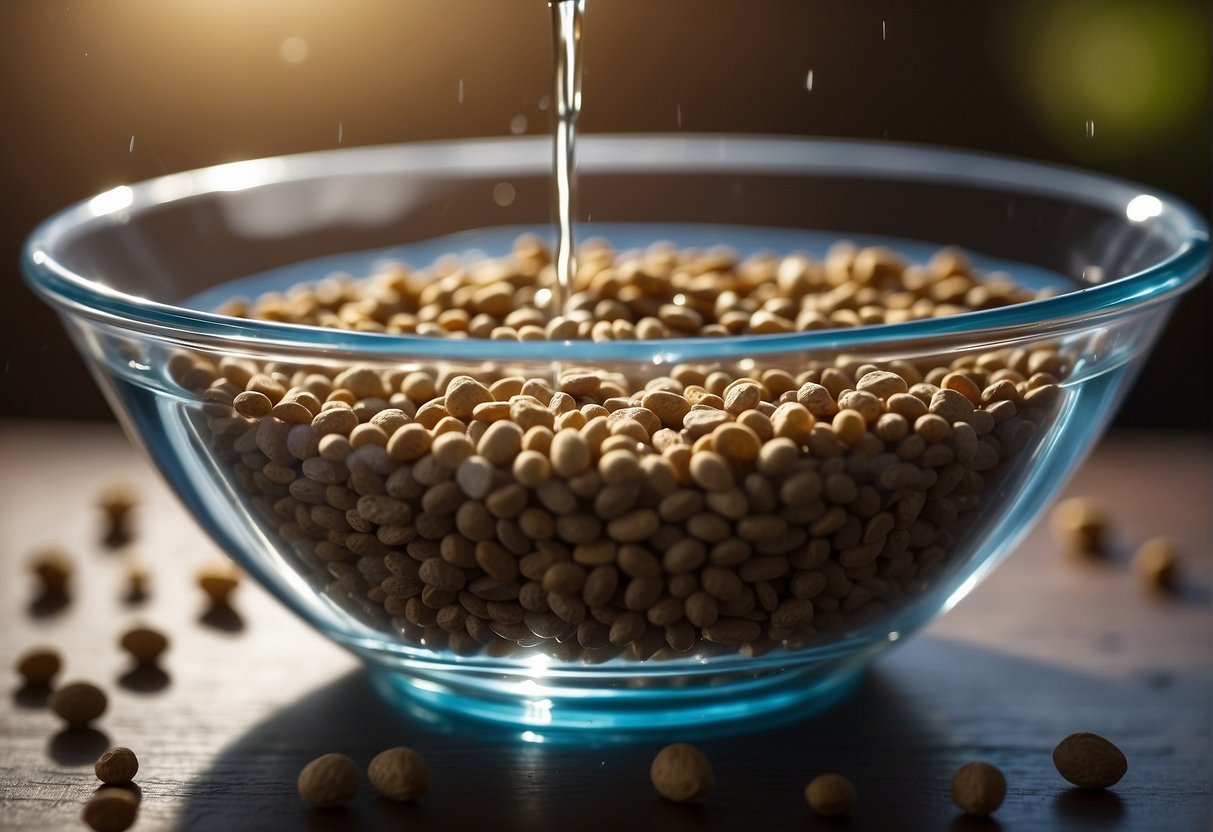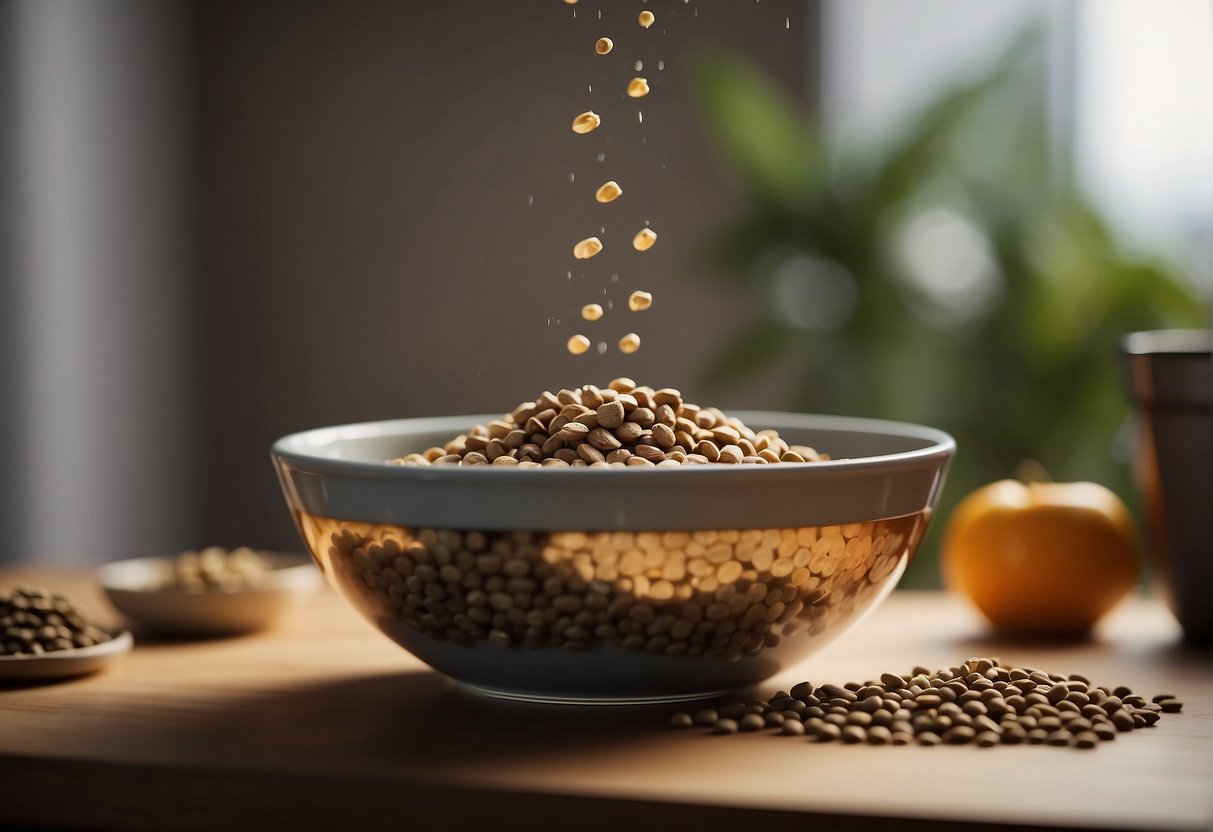Making dry cat food wet can provide an appealing option for fussy eaters and also help increase your cat’s water intake, which is crucial for their overall health. You know how your little feline friend sometimes turns its nose up at plain dry kibbles?
Adding a bit of water to their usual dry food can transform their meal into a more enticing and hydrating experience. It’s like when you spot them more interested in the dripping faucet than their water bowl – they often prefer their food and water combined!

Dry cat food offers convenience and a long shelf life, but it lacks the moisture content found in wet food, which is why some cat owners mix the two.
This practice can be beneficial, especially if your cat isn’t a big drinker or has certain health issues requiring a higher moisture diet. Providing your cat with the hydration they need doesn’t always have to come from their water dish; incorporating it into their meal can be a simple yet effective solution.
It’s not just about adding water – the temperature of the water can make a difference too. Warm water can enhance the food’s aroma, making it more enticing. Just think of it as heating up leftovers for yourself; it’s always a bit more appealing when it’s warm.
Just a bit of warm (not hot) water mixed into their dry food can do wonders for a cat who otherwise might spend too much time snoozing instead of sipping on their water.
Making Dry Cat Food Wet

To cater to your feline’s preferences or dietary needs, you might consider turning dry kibble into a more palatable wet dish that can enhance hydration and make mealtime more appealing.
Hydrating Dry Cat Food at Home
Adding water to dry cat food is the simplest way to moisten it. A common method involves adding approximately a 1/4 cup of warm filtered water to one cup of kibble. This process allows the food to absorb the moisture, softening the texture. Allow it to stand for about ten minutes before serving to ensure the kibble is adequately softened.
Using Broths and Stock to Enhance Flavor
Besides water, you can use chicken or beef broth to infuse additional aroma and taste to the dry food, attracting cats with more selective palates. Ensure the broth is low in sodium and free from onions or garlic, as these are harmful to cats.
A few tablespoons of broth can significantly increase the moisture content, making the meal more flavorful.
Creating Homemade Wet Recipes
For making homemade wet cat food, starting with a balanced recipe is vital to ensure your cat’s nutritional needs are met. You can blend cooked meats like chicken or fish with some vegetables, using a blender or food processor to achieve the right consistency. Always consult with your vet when opting for homemade meals to ensure they’re complete and balanced.
Safe Food Handling and Storage
Safety is crucial when making wet cat food. Serve the food at room temperature to prevent any stomach upset. Leftover wet food should be discarded after 4 hours to avoid bacteria growth. Store unopened homemade or canned wet food in a cool, dry place to maintain its shelf life, and always refrigerate opened wet food.
Tools for Making Wet Food
You might need a blender, food processor, or other cooking utensils to prepare homemade wet food. When only moistening dry food, a simple bowl and spoon to mix will suffice. Keep these tools clean to prevent cross-contamination and ensure the safety and health of your cat.
Tips and Tricks for Textures and Consistency
Experiment with the amount of liquid to achieve the texture that your cat prefers. Some cats enjoy a soupier meal, while others may like a thicker, stew-like consistency. Begin with smaller amounts of liquid and adjust as needed. The goal is to make the meal as appealing as possible without altering the nutrient content significantly.

My name is James, and welcome to FAQCats!
Along with our team of cat owners, expert pet enthusiasts, and pet professionals, we aim to write engaging helpful, engaging content about cats. At FAQCats we strive to provide content that’s accurate and fun to read. Our team writes about everything related to cats; even the most complex of topics. Through extensive research and caring for our own fur-pals, we’re able to provide something cat owners worldwide will love. Have a look around, and leave us feedback anytime!

